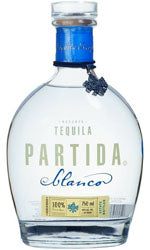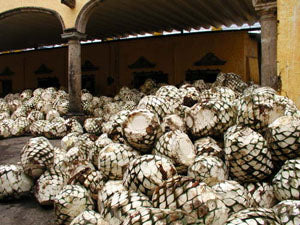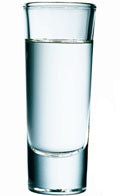Best Premium Blanco Tequila
The Tasting:
The Fifty Best held a “blind” tasting of 22 blanco tequilas with fourteen members of our spirits judging panel. The order of service was established beforehand by lottery. Strict tasting rules were applied. Each of the tequilas were poured into fresh glasses from new sealed bottles and served at room temperature. Only ice water, neutral unflavored crackers and chips were available to cleanse the palate.
The judges wrote down their impressions on score sheets. The scoring was done on a 5-point system, with 5 as the highest. Double Gold, Gold and Silver medals are awarded according to a set range of final point scores received from the judges. There were no Bronze medals awarded for this tasting. Medals are provided based entirely on merit and only to products judged worthy of such award.
The tasting notes that follow are summaries of the judges’ opinions, with all replicated commentary eliminated. The municipalities of origin are identified for each brand. .
Partida Blanco Tequila
(Tequila, Jalisco, MX) 80° proof

Aroma: Pineapple, red apple, kumquat, lime, citrus, mixed fresh fruits, dried fruit, agave, green beans, vegetal, grass, floral, herbs, mint, grain, toast, mocha, peppery, smoky, wet stones, crisp, smooth.
Palate: Chocolate, toffee, mocha, cream, vanilla, pineapple, carrot, citrus, fruit salad, dried fruits, great blend of fruit & herbs, dried herbs, mint, spearmint, grassy, wet grass, pepper, peppercorns, spicy, dried leaves, sandalwood, walnut, earthy agave, wood, sweet, silky, rich, tasty, beautiful.
Finish: Powdery cocoa, toffee note, vanilla, honey, layers of flowers, citrus, herbaceous, spicy, smoky, woody, complex, super mild, nice, rich, tasty, great.
Gold Medal

Tequila History:
Like Mexican culture itself, tequila is the result of a creative encounter between two worlds, although it is likely that Mexicans would not be inclined to refer to it as creative as much as confrontational, an imposition and, reluctantly, a conquering. The ancient indigenous peoples of this romantic country drank the fermented juice of the agave in the same way that Europeans drank beer or wine. In colonial times, the Spanish came, they saw, and they introduced the distillation process to obtain the liquor now known as tequila. It may be referred to in some circles as Montezuma's Legacy, but the fact of the matter is that it was crafted and refined by the Spanish who, while spreading their culture, were intent upon maintaining their love of intemperance and serious drinking.

How Tequila is Made: Tequila is a spirit made by fermenting and distilling the juice of the Blue Weber Agave plant. If you are getting ready for that next tasting party at your home or simply are desirous of furthering your education about Tequila, know that it takes 8 to 10 years for a blue agave plant to reach maturity. It is grown in an officially delimited region of west-central Mexico in the five states of Jalisco, Nayarit, Tamaulipas, Guanajuato, and Michoacán. The blue agave, contrary to what many are led to believe, is not part of the cactus family, so stop looking around the deserts of Arizona to impress those traveling with you. mezcal, interestingly enough, is the Aztec word for the agave plant but it is not a Tequila, although Mezcal comes from the agave plant it is from outside the delimited area. All Tequila is mezcal, but not all Mezcal is Tequila.
The juice-filled cores are then harvested, trimmed, cut in quarters, baked in steam ovens until their starch converts to sugar, at which point they are pumped into fermentation tanks and combined with cane sugar and yeast. So much for the calorie count. The more sugar that is added (up to 49% of the mixture) the less pungent the tequila will be. Sugar is never added to the fermentation of 100% blue agave tequilas. If it doesn't say 100% agave, it can still be called “tequila”, but it’s considered a “mixto”.
All tequilas are double distilled in pot stills (a few utilize a triple distillation, and several use a continuous still), and the second distillation converts the liquor into clean, white high-proof spirit. This tequila is filtered and its alcohol strength adjusted with demineralized water that brings it to its bottling proof, (usually 80). The end product must be - make that should be – at least 51% derived from that plant, although most bottles will be labeled 100%.

Types of Tequila:
– Blanco, (also referred to as White, Silver, and Plata) is colorless, with little or no aging. Blancos are usually bottled right after distillation, and are a great choice for mixed drinks. Blanco tequila comprises about 86% of the Mexican market.
– Joven (or Suave or Gold) is un-aged tequila to which select cane sugar or caramels have been added for that tawny color you occasionally see (mixtos). Jovens can also be a blend of blanco and reposado tequilas, and allowed to settle in the tanks for a few weeks before bottling. They are also perfect for mixed drinks and tend to taste a little sweeter than Blanco.
– Reposado is aged in wood tanks or barrels for at least two months, but no longer than one year, as required by the Mexican government. Many reposados average six months.
– Añejo must have at least one year in wood. Each distillery has its own preference for the type of barrel used in aging. Most are made from French oak or white oak. It is proper to order an Añejo straight up, and sip it slowly so it can best be enjoyed.
– The newest classification is Extra-Añejo, which are aged for more than 3 years.
– All tequilas start out as Blanco, with portions set aside for aging.
The word "tequila" is owned by the Mexican government. Tequila labels usually bear the letters- NOM (Norma Official Mexicana) which are the initials of the Mexican government agency and serves as a quality seal to verify that the tequila conforms to the laws and standards governing tequila production. Examine the bottle's label for it. In general, 100% agave means better quality, flavour, taste & purity, with no additives. In 1995, 100% agave represented only 15% of the entire production of tequilas. Today, 100% agave tequilas represent more than 60% of the total production.
The Art of Tasting Tequila: The Tequila Shake – Don’t swirl, place your hand over the mouth of the glass and shake the liquid to release its aroma. Drink at room temperature to judge the products properly.






